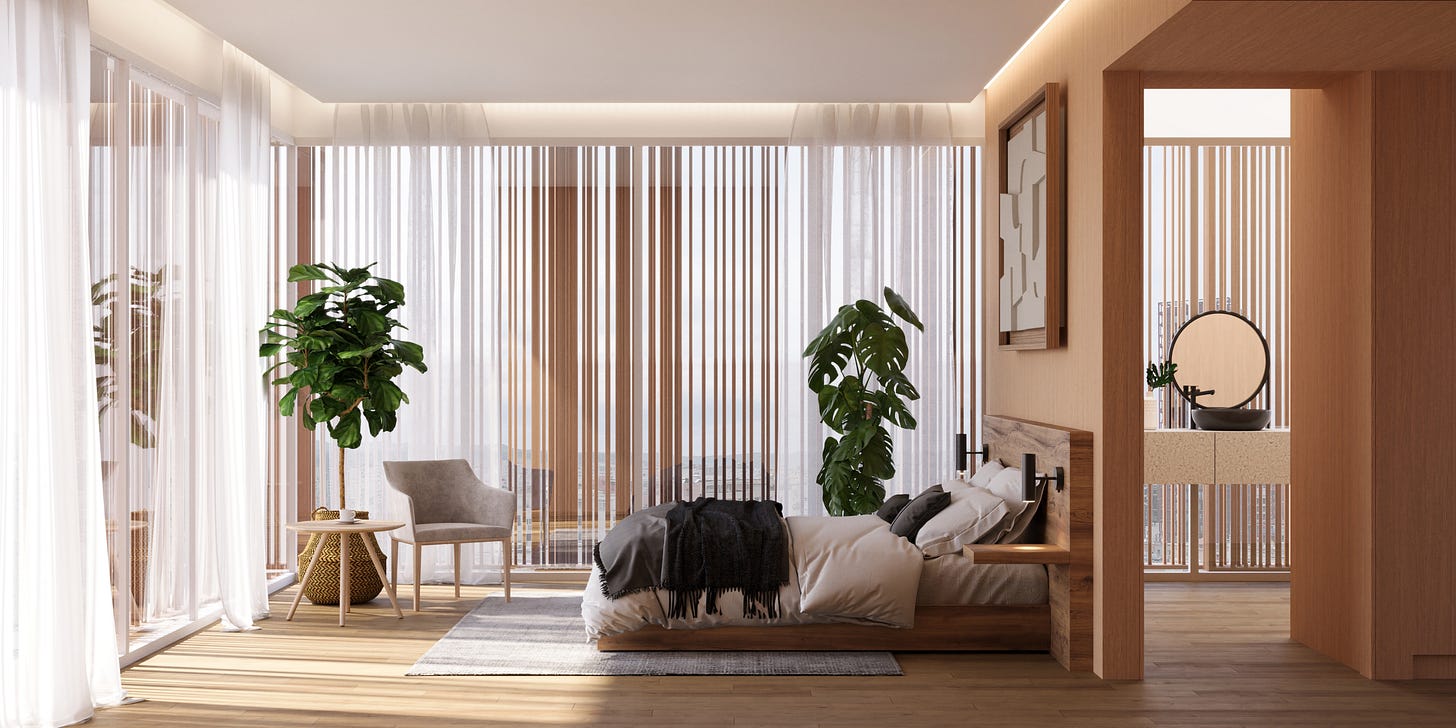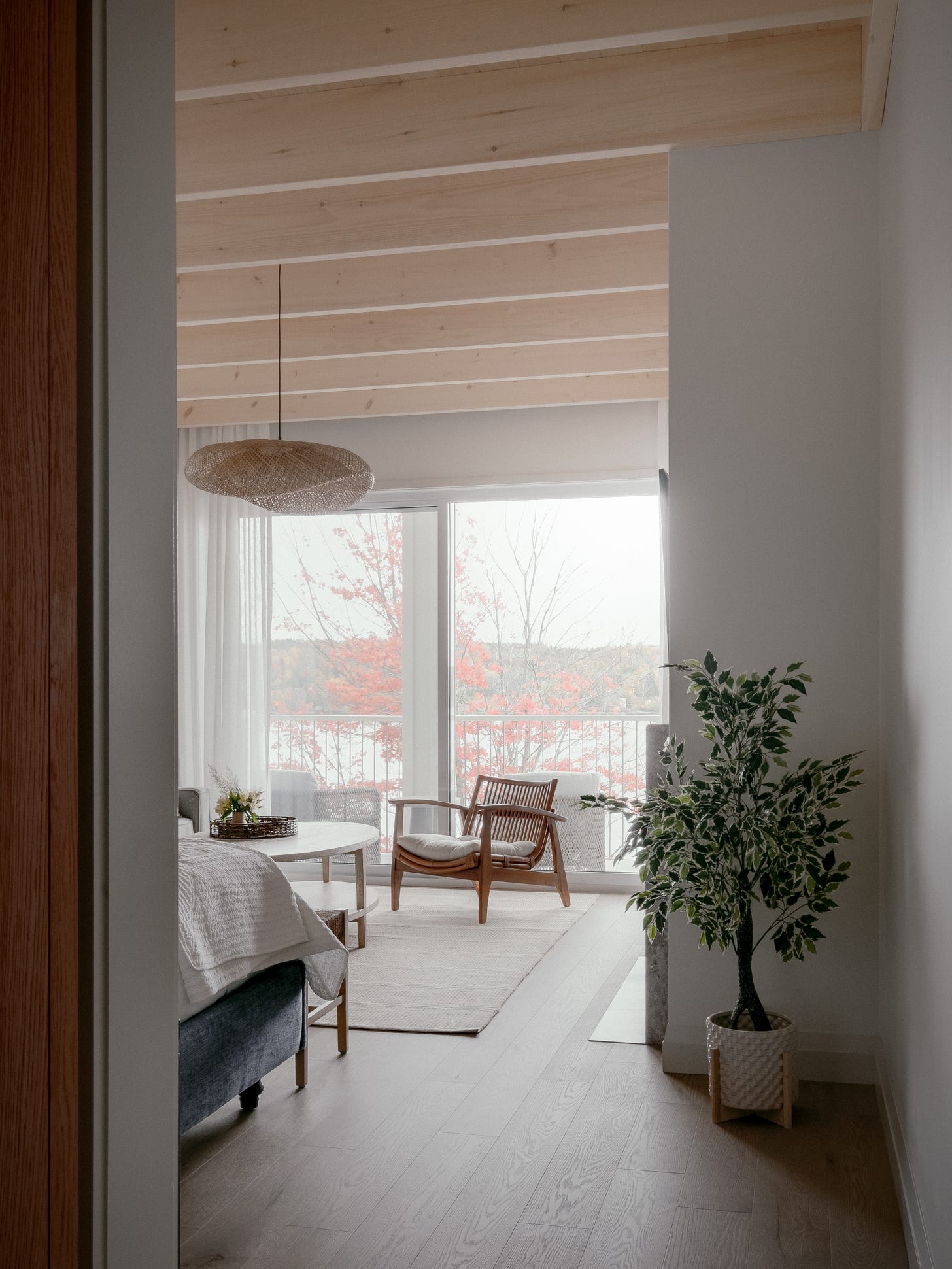Sleep, Glorious Sleep.
How the hospitality industry is finally rethinking its most important priority.
When you spend as much time as I have in and around, reviewing and designing hotel rooms, you discover one thing tops all else on the hospitality importance metre—sleep, glorious sleep. That elusive little minx who holds power over us all. In every hotel, it trumps the quest for the friendliest staff, the swankiest restaurant, and I’d even go as far as to say the most powerful hairdryer—though not by much. Honestly, there are no amount of signature cocktails or personalised macarons that can ever make up for a night of relentless tossing and turning.
Particularly at this time of year (in the UK, anyway), when the grey mornings seem endless and every cough, cold and medical complaint feels like a personal vendetta. When it seems certain, you’ll never unconsciously breathe out of your nose again, proper rest becomes so incredibly valuable. Sleep is our body's time to recover and while most of us don't have the luxury or calendar space to get more sleep, there are definitely ways of achieving better quality sleep in the hours that are available, and one industry in particular is spending billions on getting it right.
Hospitality is waking up—pun delightfully intended—to the sheer power of a good kip.
Hoteliers have, some might say a little late in the game, picked up on their guest's desire for deep, uninterrupted sleep. The notion of “sleep tourism” has started gaining some serious traction as travellers flock to places, not for the local landmarks or gastronomic delights but to indulge in the ‘luxury’ of eight or nine blissful hours of shut-eye. At the Premier Inn, they tout a “Good Night Guarantee,” determined to hush the cynics who believe budget stays mean budget rest. Zedwell Hotels in London is an entire brand of hotel that is completely dedicated to sleep and wellbeing. Their rooms have been specifically engineered to muffle the clatter of the city beyond and the bathrooms are stocked with all the lotions and potions you can think of to aid in great sleep.
At the same time, Ockenden Manor in West Sussex is offering sleep retreats. At £999pp, they promise to improve sleep quality and help cure a racing mind, along with teaching guests about other sleep-related revelations. Elsewhere, brands like Six Senses entice travellers with personalised programmes devoted to better rest and Belmond Hotels offer a complimentary Sleep Concierge service at The Cadogan that they have curated in partnership with a Harley Street sleep expert. Some might baulk at the idea of flying halfway across the globe for a good nap, but the market for an indulgent doze—particularly one bolstered by the latest wellness wisdom, gadgets and gizmos—has proven astonishingly robust.
Many studies have been compiled that link a guest’s satisfaction with their night’s sleep and then to their likelihood of returning. Well-rested patrons leave raving reviews, whereas bleary-eyed ones—not so much. Bad sleep is bad for business.
So, what are they doing differently? Well, first off, lighting has been rethought. Tapping into the science of our body's natural rhythms, circadian-friendly LEDs that lead with a soft, warm glow in the evening and ramp up to crisp brightness come morning are the go-to. I’ve seen some setups so intuitive that guests aren’t even aware the colour temperature is shifting throughout their stay, no fiddling with endless switches, just sophisticated automation being used at its best.
Proper acoustics come next— no more noisy neighbours or distant sirens. Triple-glazed windows and heavily insulated walls are standard on the architecture side, while choice furniture pieces and fabrics with increased acoustic absorption rates are where the interior designers are making changes. Interestingly enough, a helping hand from foliage is starting to emerge too. Plants have typically been relegated to public spaces in hotels, but recently, large leaves and dense living walls have been used to absorb and diffuse ambient noise. Admittedly, a row of peace lilies won’t silence a 2 a.m. stag do, but they can dull the echoes of corridor chatter in tandem with solid architectural decisions.
In fact, the humble houseplant has dual purpose when it comes to super sleep. They’ve been shown to be one of the most effective tools in a designer’s arsenal—especially in the bedroom. Whether it’s boosting humidity to prevent congestion (bonus: this is great for your skin, too) or filtering out airborne pollutants, plants can help clean air and also bring what's known as a calmer “mental backdrop” to your room.
And, there's even more: NASA and some other folks did a few studies on air purification exploring plant synergy and found that rubber plants, snake plants, and peace lilies, when grouped together, appear to turbo-boost their capacity to filter volatile compounds (VOC’s) from the air. Think the Avengers, but they are plants and instead of saving the world, they are saving your lungs. Additionally, the microbes found in well-managed soil can also help cut down on airborne mould spores, a detail especially helpful to anyone cursed with allergies or with a crappy landlord.
There used to be a rumour that plants compete with us for oxygen through the night, making them bad for bedrooms, but modern findings have calmed that fear. In fact, certain succulents employ a nifty trick known as CAM photosynthesis, giving off minor bursts of oxygen in the wee hours, making them most effective when placed in the bedroom. Cacti, agave, and some Euphorbias fall into this group.
The real magic lies in how plants contribute to what some journals call “micro-nature therapy.” A yearning for nature is genetically hardwired into us, and so its presence, large or small, can have a profound effect on our bodily systems. You may have noticed, but maybe not, that there is something almost reassuring about the presence of a plant. Something calming about hearing the rustle of leaves when the window’s ajar. These details subconsciously soothe the mind. A well-placed fern, if properly nourished, can offer a sense of calm far more reliably than almost anything else. It makes sense that plants are a great facilitator within a bedroom, a place where calm is (most of the time) of the utmost importance.
Truthfully, while some things will be constant, what it takes to achieve a good night’s rest will be unique, person to person. It depends on offering and then layering the right conditions in one cohesive design. The best duvet in the world won’t redeem a space if the acoustics are dreadful or the air is stale. Nor will a fortune spent on avant-garde artwork. But bringing in natural elements and supporting them with great technology and the right products might surprise even the most sceptical sleeper and deliver the world’s oldest luxury: a truly restful night.




